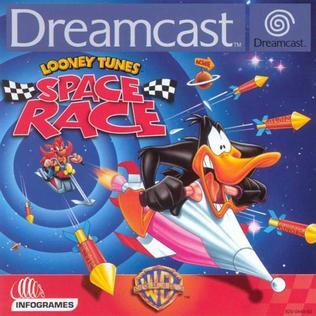

Definitely Sonic Adventure. But I’ll also name a gem no one else is going to mention:



Definitely Sonic Adventure. But I’ll also name a gem no one else is going to mention:

Wait, what does the onion do in this scenario? That seems oddly specific.
Definitely gives off Ramón Salazar vibes (Resident Evil 4). My gamer instincts are telling me “shoot it in the head before it does something nasty”.


Having dual-purposed my 3080 for both work (product marketing renders) and gaming, the cost was actually manageable and I’ve since earned back the costs. But it is what we’ve come to. Enthousiast hardware is only really feasible if you have a businesscase for it. If it doesn’t pay for itself, it doesn’t make sense.
Part of what got us into this mess is that GPUs started to become their own business case due to crypto mining. Which added a bunch of RoI value to the cards, which was ultimately reflected in their pricing. Now that consumer mining is pretty much unfeasable, we’re still seeing ridiculous pricing, and the only ways to make money using a GPU require a skillset or twisted morals (scalping).
If I were to buy something for gaming only, $1k definitely does not make any sense at all. And if that part requires at least $800 in other parts to make a full system it’s even less reasonable. Consoles are the other extreme though, and are usually sold at a loss to get you spending money on the platform instead.
On behalf of all of you in this community, fuck the status quo!


Honestly, this is probably a better solution than you might have guessed. Especially when it comes to fake inflation price hikes.
Companies have this way of shit-testing the economy to see what you’re willing to pay. If there isn’t a significant reduction in turnover rates, then say hello to the new prices!
Prime example being NVIDIA with their bogus GPU pricing. Turns out that their shit still sells at $2000 a GPU, and people seem way to quick to accept this as the new reality.
If we all agreed that $2000 GPUs, $3000 laptops and $1500 phones are bullshit, those price points wouldn’t exist. Unfortunately we live in a world where normies are more interested in fancy features and the general public is incapable of estimating specs based on their needs. Which leaves all of us being played for absolute fools by companies manipulating the supply chain.


There is valid criticism as well though. Mostly on the topic of software support duration and scope vs. consumer expectations. But there are also some realiability and hardware failure rate concerns.
It’s important to view those critiques in the context of Fairphone being an underdog company with a relatively small production volume onto which we project the same expectations we have of Apple and Samsung.
Ultimately it is viability of the business case determines how good of a value proposition the Fairphones will be long term. Which is a shame, because Fairphone’s vision is almost exactly what I want in a mobile device. It all leads to this catch-22 situation where the Fairphone is not quite the undisputed best choice it should be, and the only way for them to get there is that everyone pretends it is. It should be a self-fulfilling prophecy, but consumers don’t want to make concessions.


That’s my take on phones in general. It’s a “pick one” situation. You can either have fancy hardware features or you can have freedom in software, not both.
Hopefully my current phone holds out long enough for there to be a compelling choice that somehow has both.
As things are right now, it’ll either be a Fairphone 5 for the freedom it brings, Pixel as a compromise, or Samsung Galaxy for the features.
Just to be clear, Monster Hunter is 60% boss rush, 30% resource management and 10% gear progression.
Compared to Souls gameplay, Monster Hunter is more grindy and mission-based and you’re always pointed at the next big thing. Beat a monster, collect materials, craft weapons and armour, repeat ad nauseam. And do everything all over again when you hit High Rank.
Don’t go into Monster Hunter expecting a Souls game, it’s a different experience.
That said, I absolutely love the Monster Hunter series and have probably sunk over 800 hours into different entries combined. Definitely give them a go! And if you do, keep in mind that the newer games have some handholding QoL features not found in older games, so keep that in mind when you decide in which order you might want to experience the games.


I hate the fact that none of the big names support CalDAV natively. DAVx5 is cool and all, but app developers really need to step up their shit and support CalDAV already. Not just Microsoft Exchange and Google Calendar but CalDAV as well. It’s not like they need to rebuild their apps from scratch.
At this point you might just be better served using a web app instead of a native mobile app. Maybe K-9 Mail transformation into Thunderbird Mobile might bring some good news, but I’m not holding high hopes.
Maybe we should, under the EU’s DMA, force anyone that bundles a calendar/note app with their phone OS to support CalDAV as well as any proprietary protocol of their choice.
Looking back on the show years later, lots of stuff it portrayed was actually rather disturbing to the mind of the innocent young child.
10/10 would recommend, but holy shit did it feature some life lessons.
And this creepy walrus… fuck that guy!
Fun fact: The Frisian language (and Dutch by extension) has overlapping origin with both Danish and Swedish.
We can usually grasp a lot of conversational Danish and Swedish because a lot of the words are similar.
From a Dutch perspective, there’s always 5 new Flemmish words to memorize. You’d think we speak the same language, but we really don’t.
In some ways, Flemmish is more Dutch than the language anyone from the Netherlands speaks. Which seems especially true when it comes to loan-words from French, which some of you seem to avoid at all costs.
All of this leads to interesting situations where any conversation with our southern neighbours has a risk of needing a mental double take to make sure we derived the right meaning from your fancy words.
One example of how crazy things can get is the word for roundabout. The Dutch will generally refer such traffic control measures as rotonde, which is a French bastardization. The Flemmish, in turn, sometimes refer to them as rondpunt. …which the French seem to have adopted when they say rond-point.
The French definition of rotonde is actually from architecture. Where it is used for dome-shaped constructions, and is originally derived from the Latin rotondus, which just means “round”. Conclusion: Dutch is a weird language.
I usually associate yoink with playfully stealing something, whereas graaien in this context refers more to behaviour seen in landlords and high level executives. You know, the kinds of people that are so far up their shareholder’s butts that they can’t see the damage they’re causing.
Let’s just reserve yoink for stealing each other’s hoodies and similar endearing behaviour.
And it leads to a neverending stream of newly invented hype words.
We even have a yearly word of the year tradition, where the organisation behind our most famous dictionary picks one of these newly invented words based on coverage in media.
Last year’s word was “graaiflatie”, a combination between “graaien” (no direct translation, means to grab, but in a greedy way), and “inflatie” (inflation).
Transcoder here, if you’re looking to leverage quality/file size benefits of your codec, you don’t encode with hardware.
As a rule of fist hardware encoding is better served for streaming purposes where you need to crush a raw 1080p or 1440p stream into something that’s actually a sensible bandwith as fast as possible, especially if you’re streaming 60fps because your algorithm has a time limit of 16ms per frame.
If file size with preservation of quality is something you care about, you encode as slowly and thouroughly as you can, which is why x264 on your CPU will outperform encoders like NVENC any time.
When it comes to HEVC, software encoding is only really worth it if you have the time to spare, because x265 takes between 3x and 5x as long as encoding the same footage through x264, with a 15-20% smaller file size at best. It is also more intensive to decode, which is why you still see many files with a H.264 codec.
If someone has you wondering if they’re compensating for something, it’s probably true.


I work in IT, and different definitions of what SaaS means are starting to wreak real havoc on the architecture as a whole.
We are better served just quitting the acronyms and taking the time to talk about a more detailed description of what the service actually adds in terms of value.
Amazon Prime is a subscription for shipping, video streaming, gaming benefits and more. Since software is not the primary goal, but a means of delivery for these other services, I will not consider Amazon Prime SaaS.
C===3 // likely to be false, depending on type of C
C==3 // likely to be true, depending on value of C
How you interpret this information is on you. Also please note that below statement is valid Javascript. That is all. UwU? “What’s this” :3


So your system knows the exact situation and still is slowing down my bike, just at the moment I need to accelerate to avoid being overrun by that large truck heading into me.
After reading the article, it seems like the system is supposed to temporarily jam pedal assist, turning your ebike into a regular bike. And the system would need to be installed in all street legal ebikes for that to happen. Since you’re still free to accelerate by pedaling like a normal bike user, that significantly reduces the amount of situations where the pedal assist would actually save you. If you can’t avoid collision by pedaling harder, you probably had no chance in the first place.
Considering most of the inner city’s roads now have a 30 km/h speed limit for cars, collision safety is probably even less of a concern now.
I do share the concern of others in the comments that such a system would probably be broken on day one, and you have a bunch of script kiddies with flipper zeros running around bricking ebikes.
The only way for that not to happen is to use proper encryption for any wireless signals being used to control this system. Considering the Dutch governmental reputation for IT failures, this is probably not going to go well.
NVIDIA shareholders hate this post!